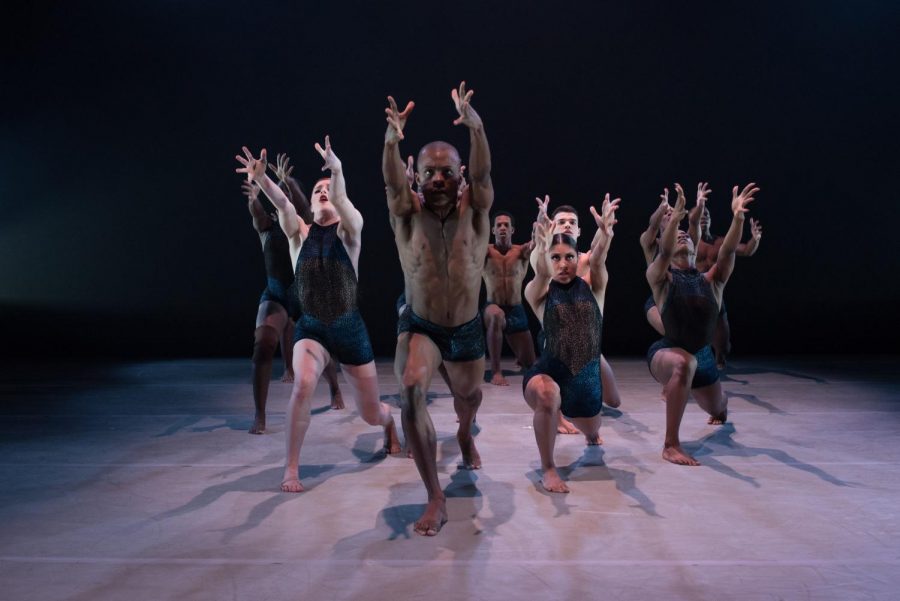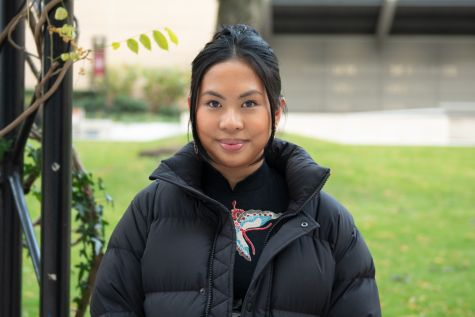II, Too: The Next Generation of Dance
COURTESY OF NAN MELVILLE
Ailey II is the perfect bridge between The Ailey School and the world of professional dance.
March 31, 2019
Five minutes before showtime, the air was filled with panic, excitement and pale smoke. Disciples of dance scurried down the aisles to find their red velvet seats. People from every walk of life gathered at NYU Skirball Center to see what Ailey II had to offer. As the house lights threatened to dim, audience members were still gathered in the aisles, as if this performance was a reunion of old friends.
Ailey II’s season at NYU Skirball, titled “Ailey II — The Next Generation of Dance,” is a continuation of Alvin Ailey’s 60th anniversary. The season features two programs: “All New” and “Returning Favorites.” The former features premieres from choreographers in “the Ailey family,” as artistic director Troy Powell calls it. They include Uri Sands, Bradley Shelver, Alvin Ailey American Dance Theater Artistic Director Robert Battle and Powell himself. The latter features audience favorites from Juel D. Lane, Renee I. McDonald and Darrell Grand Moultrie.
Audiences will be awestruck by Ailey II’s infallible energy. The company’s 12 dancers — five of whom are Fordham/Ailey BFA alumni — display their versatility in the programs, showcasing everything from percussive prowess in Battle’s “Flock” to emotional expertise in Powell’s “Ebb and Flow.”
It’s Ailey II’s 12-person roster that distinguishes the company from other second companies, as well as the first company, Alvin Ailey American Dance Theater. As company member Marcel Wilson, Fordham College at Lincoln Center (FCLC) ’18, stated, the second company serves as a “stepping stone” for students from The Ailey School.
“The objective was to expose these 12 dancers to what life as a professional dancer within a company was like, but to give [them] the space needed to grow and mature,” Wilson said. Their efforts have certainly paid off; Ailey II dancers move with the maturity of a seasoned professional and the vigor of a student.
The second company’s smallsize also contributes to the sense of community that underlies many of its works as well as the general atmosphere of the company. Company member Alisha Peek, FCLC ’18, noted a sense of “comfortability amongst the dancers” because the majority of the company is selected from The Ailey School. This translates into their work, most notably in Bradley Shelver’s “Where There Are Tongues,” an energetic, quirky work that takes you on a journey alongside all 12 members of the company.
Throughout the 27-minute piece, the dancers never left the stage even when they weren’t dancing. In fact, the work begins with all of the company members on stage, watching a soloist. As the men dance, the women watch from the corner, and vice versa. In the lively finale, the entire company dances in unison, sometimes pausing to cheer on soloists and duos.
Their energy was so infectious that the entire audience began to clap and cheer as if they were on the stage with them, as if they were dancing with them.
There’s an indescribable kind of chemistry between the young members of the company, who come from near (Bronx native and BFA alumnus Marcel Wilson) and far (Brazilian Leonardo Brito and Swiss-Ghanian Caroline Theodora Dartey). As Grace Bergonzi, FCLC ’17, put it, they “come together to create this unique community” of storytellers.
Despite the rigorous lifetime of training that each company member has gone through, their most impactful skill is their ability to emote and tell stories. Though community seemed to underlie all of their works, they didn’t whisk audiences away to a go-lucky dreamworld to escape from today’s world. Many of the pieces in their repertoire serve as poignant commentary on society. Notably, Robert Battle’s “Flock” tells the story of a charismatic yet problematic leader and his disciples, which reminded Amarachi Korie, FCLC ’18, of “how powerful influence of any kind can be.”
Similarly, Uri Sands’s “Tracks” features an endearing duet between two black men, “a sight that is rarely seen in society today,” Antuan Byers, FCLC ’17, pointed out. Danced to The O’Jays’ “Desire Me,” one can assume that the pas de deux is about a romantic relationship between the two men. But nowhere is it explicitly said that the duet was about two gay black men.
People forget to consider the stereotypical relationship between a father and a son or two brothers. With every entangled movement, the men dance their way against toxic masculinity.
In accordance with his principle that dance is for everybody, Alvin Ailey created Ailey II to provide not only a bridge between The Ailey School and professional life but also to provide access for the general public. In fact, the company’s season at NYU Skirball is triumphant homecoming from a 36-city world tour.
While the first company performs in larger cities, the second company performs in smaller cities that don’t have the same access to the arts as their larger counterparts.
In addition, the company teaches master classes in those cities to extend their own sense of community to others through dance. Byers calls the touring schedule “intense,” but “without pressure you can’t have diamonds, right?” The company’s two main objectives work hand in hand to create the crown jewels of the next generation of dance.











